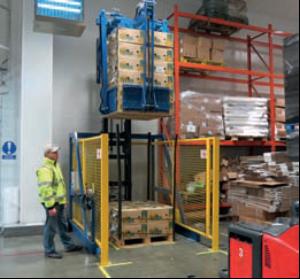| Home> | Automation | >Conveying components | >Automated layer lifting |
ARTICLE
Automated layer lifting
26 February 2013
Airflow asserts that automating the lifting, splitting, topping and changing of pallets can boost health and safety and improve efficiency.

Airflow asserts that automating the
lifting, splitting, topping and changing
of pallets can boost health and safety
and improve efficiency.
Unloading pallets for putaway in the warehouse can be problematic and labour intensive. It is not uncommon for racking bays to be 1.8m high, while some pallets that arrive in the goods-in area are 2.4m high. This means layers have to be removed and restacked. The height of the top layers make it difficult to do by hand with staff vulnerable to overstretching.
It is not uncommon to have teams of a dozen workers carrying out this task in a busy warehouse. Pallets rising to 2.4 m are too high for people to lift layers off.
Airflow's machine does this in 30 seconds, plus the customer can split the pallet at any point by lifting off as many layers as they wish.
Unloading pallets for putaway in the warehouse can be problematic and labour intensive. It is not uncommon for racking bays to be 1.8m high, while some pallets that arrive in the goods-in area are 2.4m high. This means layers have to be removed and restacked. The height of the top layers make it difficult to do by hand with staff vulnerable to overstretching.
It is not uncommon to have teams of a dozen workers carrying out this task in a busy warehouse. Pallets rising to 2.4 m are too high for people to lift layers off.
Airflow's machine does this in 30 seconds, plus the customer can split the pallet at any point by lifting off as many layers as they wish.
MORE FROM THIS COMPANY
OTHER ARTICLES IN THIS SECTION










/GRABOMATIC LOGO-tn.jpg)
















